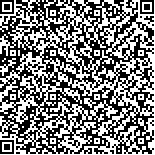| 引用本文: | 朱祥,尧晨光,胡康洪.肠道病毒71型感染相关调控枢纽基因筛选[J].生物信息学,2017,15(4):242-248. |
| ZHU Xiang,YAO Chenguang,HU Kanghong.Screening enterovirus 71 infected-related host regulatory hub genes[J].Chinese Journal of Bioinformatics,2017,15(4):242-248. |
|
| 摘要: |
| 肠道病毒71型(enterovirus 71)是引起婴幼儿手足口病的重要病原体,目前尚无特效抗病毒药物,并且宿主对病毒感染的应答研究有限。为深入研究病毒感染后宿主调控机制,分析了EV71感染RD细胞的基因表达芯片数据,筛选到与感染时间相关的6 642个差异基因;同时使用加权基因共表达网络分析方法(WGCNA)构建基因调控网络,得到和病毒感染时间呈强正负关联的pink模块和darkgreen模块。结果表明:GO分析发现目标模块分别富集于前剪切体的反式组装与翻译起始,KEGG Pathway富集分析发现pink模块没有显著的通路富集,darkgreen模块通路富集于核糖体相关通路;Visant展示目标模块的调控网络并筛选出pink模块枢纽基因RPS4X、HSPA13、CXCL9、CD55与darkgreen模块枢纽基因ABLIM1、MPDU1、SUPT7L、CTSS。qPCR验证的3个持续上调的基因TXNIP、EGR1、c-FOS和8个枢纽基因的转录水平与芯片数据一致,其中TXNIP、EGR1、c-FOS表达上调超过2.5倍,CXCL9下调4.5倍。这些关键基因的发现可能为EV71感染机理的研究和药物研发提供参考。 |
| 关键词: 肠道病毒71型(EV71) 加权基因共表达网络分析 GO分析 枢纽基因 感染关联模块 |
| DOI:10.3969/j.issn.1672-5565.201705002 |
| 分类号:R373.2 |
| 文献标识码:A |
| 基金项目:湖北省自然科学基金重点项目(2014CFA075);武汉市科技局应用基础研究计划项目(2015060101010033). |
|
| Screening enterovirus 71 infected-related host regulatory hub genes |
|
ZHU Xiang1,2, YAO Chenguang1,2,HU Kanghong1,2
|
|
(1.Sino-German Biomedical Center, Hubei University of Technology, Wuhan 430068, China;2.Key Laboratory of Fermentation Engineering, Ministry of Education(Hubei University of Technology), Wuhan 430068,China)
|
| Abstract: |
| Enterovirus 71 is the major pathogen of hand foot and mouth disease, without any specific antivirus agent for this disease up to now. Moreover, the host response to virus infection is unclear. To investigate the mechanism of host regulation on viral infection, this study obtained 6642 differentially expressed genes that were associated with infected time by screening the microarray data of RD cell infected with EV71, and constructed the gene regulatory network by the weighted gene co-expression network analysis method (WGCNA). The network modules, pink module and darkgreen module, were identified and then were found to be have strongly positive and negative correlation with the infection time. GO analysis results revealed that these two modules were enriched in cis assembly of pre-catalytic spliceosome and translational initiation, respectively. Pathway enrichment analysis results showed that the pink module was focused on Alzheimers disease, and the darkgreen module was enriched in the ribosome pathway. The network of the targeted modules was presented by Visant software and the hub genes RPS4X, HSPA13, CXCL9, CD55 in pink module and ABLIM1, MPDU1, SUPT7L, CTSS in darkgreen module were screened out. The qPCR results showed that the transcriptional levels of three consecutive up-regulated genes TXNIP, EGR1, c-FOS and 8 hub genes were consistent with the microarray data, and the expression of TXNIP, EGR1 and c-FOS were more than 2.5-fold change and the expression of CXCL9 was decreased by more than 4.5-fold change. In summary, the discovery of these hub genes might provide a reference for the mechanism of EV71 infection and the development of anti-viral drugs. |
| Key words: Enterovirus 71 Weighted gene coexpression network analysis Gene ontology analysis Hub gene Infection associated modules |






